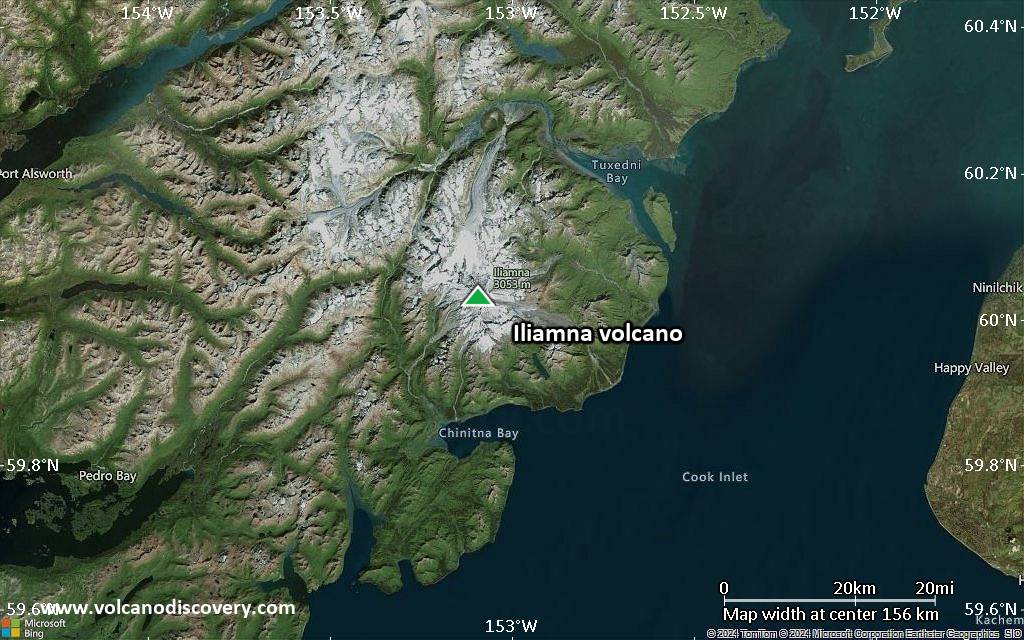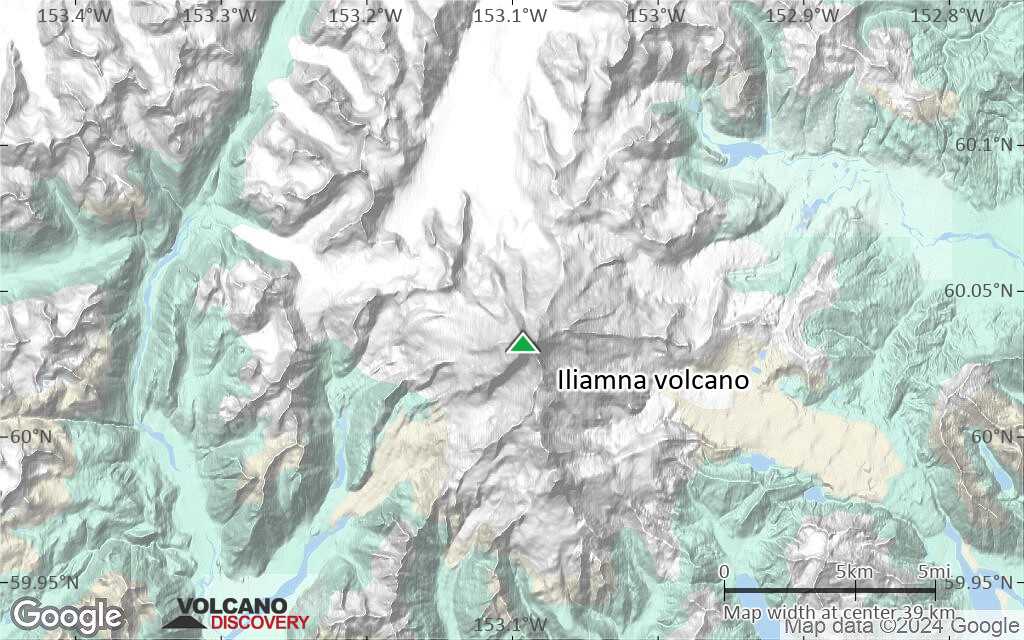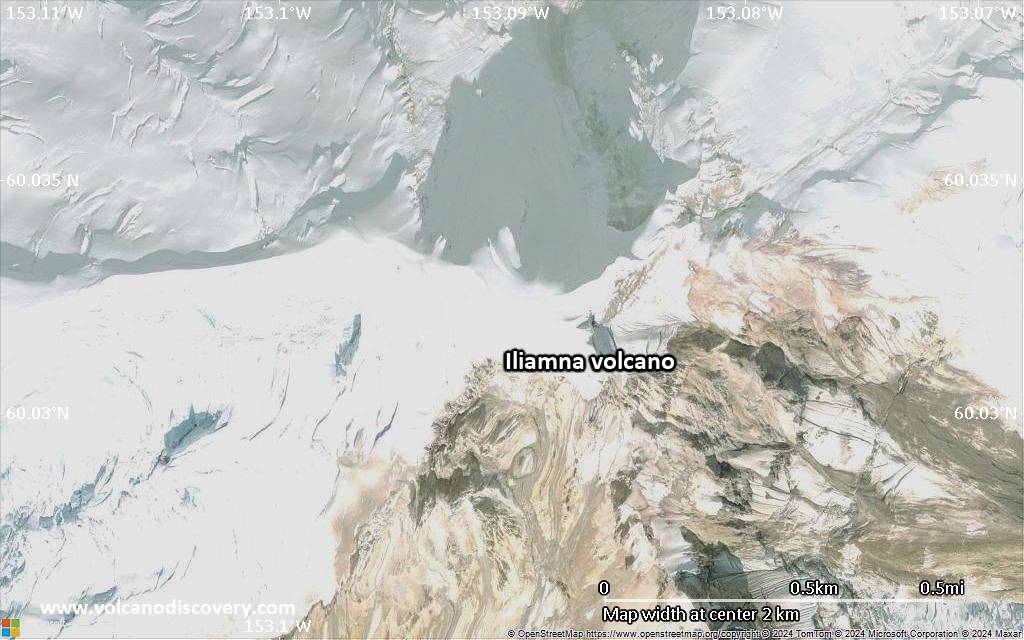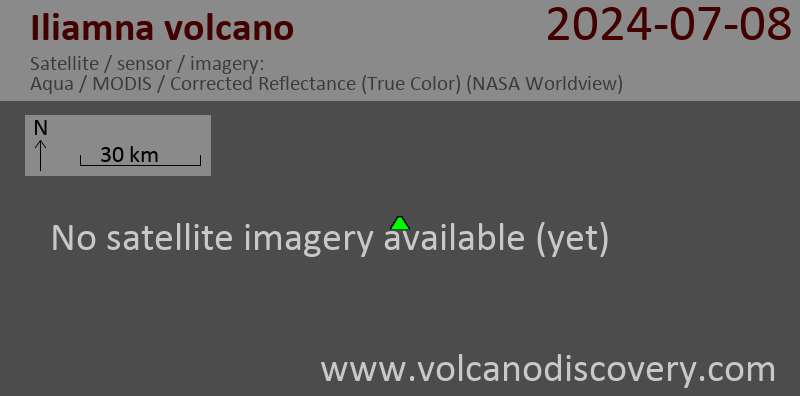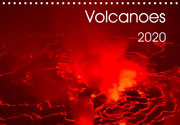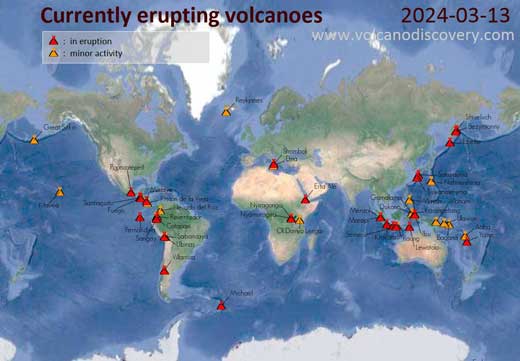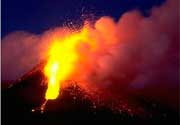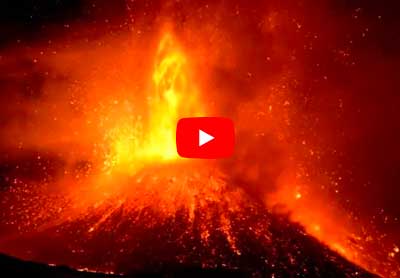Iliamna Volcano
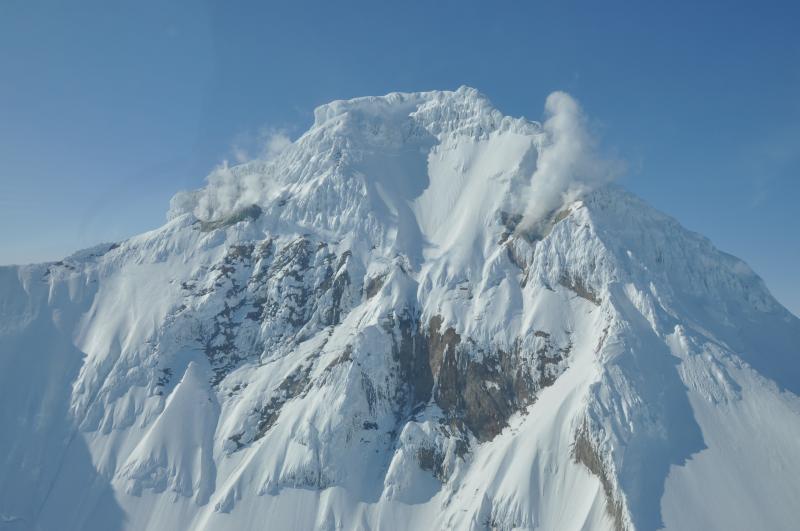
Iliamna volcano is a large stratovolcano on the western side of the Cook Inlet, in Lake Clark National Park 220 km SW of Anchorage or 100 km NW of Homer.
There are several uncertain reports about activity in the past 250 years, but the only confirmed known historical eruptions were small to moderate explosive eruptions in 1876, 1867, and between 778 and 1879. A larger eruption with pyroclastic flows was dated by radiocarbon method and occurred between 300 and 140 years ago, but was not observed. Most of the sparse eruption reports from Iliamna are probably referring to strong activity of fumaroles located east and SE of the summit.
Iliamna volcano eruptions: 1953(?), 1952(?), 1933(?), 1876, 1867, 1843(?), 1793(?), 1778-79, 1768(?)
radiocarbon-dated: 1650 ?, 450 BC ?, 2050 BC ?, 5050 BC ?
Latest nearby earthquakes
| Date and Time | Mag / Depth | Distance / Location | |||
|---|---|---|---|---|---|
| Jun 8, 11:00 pm (Universal Time) | 1.5 115 km | 3 km (1.8 mi) to the NE | Info | ||
| Saturday, June 7, 2025 GMT (2 quakes) | |||||
| Jun 7, 04:17 pm (Universal Time) | 2.5 132 km | 9.9 km (6.1 mi) to the NW | Info | ||
| Jun 7, 02:58 am (Universal Time) | 1.5 106 km | 13 km (7.8 mi) to the NE | Info | ||
| Friday, June 6, 2025 GMT (4 quakes) | |||||
| Jun 6, 03:05 pm (Universal Time) | 1.5 129 km | 17 km (10.6 mi) to the SW | Info | ||
| Jun 6, 01:50 pm (Universal Time) | 1.6 103 km | 29 km (18 mi) to the SE | Info | ||
| Jun 6, 12:54 pm (Universal Time) | 1.6 127 km | 17 km (10.5 mi) to the W | Info | ||
| Jun 6, 01:02 am (Universal Time) | 1.6 80 km | 28 km (18 mi) to the E | Info | ||
| Saturday, May 31, 2025 GMT (3 quakes) | |||||
| May 31, 10:49 am (GMT -8) | 3.4 118 km | 10.2 km (6.4 mi) to the S | Info | ||
| May 31, 03:10 am (GMT -8) | 2.4 85 km | 23 km (14 mi) to the E | Info | ||
Background
Iliamna volcano has no distinct summit crater, but forms a flat top joined on the south by a 5 km long ridge with the prominent flank lava domes of North and South Twin Peaks. Another important flank vent is the Johnson Glacier dome on the NE flank.Steep headwalls on the southern and eastern flanks expose an inaccessible cross-section of the volcano.
Several major glaciers radiate from its summit; the 4 largest together contain an estimated volume of 15 cubic km of ice.
Eruptions producing pyroclastic flows have been dated at as recent as about 300 and 140 years ago (into the historical period), and elevated seismicity accompanying dike emplacement beneath the volcano was recorded in 1996.
Significant volcanic eruptions: Iliamna volcano
Additionally, there are 10 uncertain or discredited eruptions from Iliamna volcano.
| Date | Note | VEI | Deaths | Damage | ||
|---|---|---|---|---|---|---|
Discredited Eruption | ||||||
Discredited Eruption | ||||||
?? | Uncertain Eruption | 2? | ||||
?? | Uncertain Eruption | ? | ||||
?? | Uncertain Eruption | ? | ||||
?? | Uncertain Eruption | ? | ||||
Historical obs./docs. | 3 | |||||
Historical obs./docs. | 2 | |||||
?? | Uncertain Eruption | ? | ||||
?? | Uncertain Eruption | ? | ||||
?? | Uncertain Eruption | ? | ||||
Historical obs./docs. | ? | |||||
?? | Uncertain Eruption | ? | ||||
| ? | ||||||
| ? | ||||||
| Upper NE flank | 4P | |||||
| 4P | ||||||
Eruptions of Iliamna volcano
During 1996-97, dike intrusions under the volcano caused several shallow earthquake swarms, but no eruption. ...more info
On the morning of 19 March 1987 at 8am, several pilots observed an unusually large steam plume rising about 1000-1100 m above the summit of Iliamna. The plume originated from an area on the upper S flank vent, but did not contain visible ash.
The event is not counted as an eruption, but a period of exceptionally strong degassing from active fumaroles.
A brief steam eruption occurred on 7 November 1978 between 10 and 13 h local time, producing puffs of steam, ejected every 1-5 minutes, that rose an estimated 3 km above the summit. No ash was visible in the steam puffs. No unusual seismic activity was recorded.
Iliamna Volcano FAQ
+When was the last eruption of Iliamna volcano?
The last confirmed eruption of Iliamna occurred in 1876.
+How often does Iliamna volcano erupt?
Since 1778, Iliamna volcano has had at least 3 historically documented eruptions. This means that it erupts on average every 82 years.
Many eruptions of Iliamna have lasted more than one year. In total, the volcano has been in eruption during 4 out of 247 years until now. In other words, Iliamna has been active at least one in 61.8 years on average. Note that this value is likely an underestimate, because the known history of eruptions from Iliamna is likely incomplete, especially further back in time.
+When was the largest eruption of Iliamna volcano?
The largest eruption known from the younger geological history of Iliamna volcano occurred in 2050 BC. It ranks as a "vulcanian" eruption with a magnitude 3 on the VEI (Volcanic Explosivity Index) scale.
Latest satellite images
Iliamna Volcano Maps










